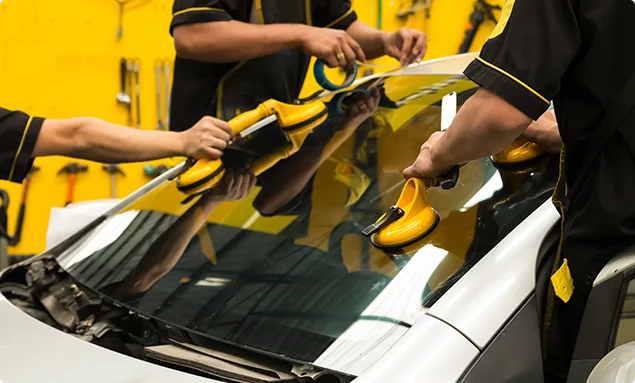Understanding the Differences Between Laminated and Tempered Glass: A Comprehensive Guide
Not all 'safety glass' is the same! Here's the difference:
- Laminated:�Shatters but stays in one piece. Blocks UV rays.
- Tempered:�Breaks into small, dull pieces. Stronger and heat-resistant.
Choose the type that best suits your needs.
Laminated glass is safety glass. It stays intact when broken. It also offers sound and UV protection. Tempered glass is stronger, breaks into small chunks, and withstands higher temperatures. Choose laminated glass for safety and UV protection. Choose tempered glass for strength and thermal resistance.
Laminated Glass: Definition and Properties
Laminated glass, often referred to as safety glass, is a type of glass that holds together when shattered. It is made by bonding two or more layers of glass with an interlayer. The interlayer is usually made of polyvinyl butyral (PVB) or ethylene-vinyl acetate (EVA). This interlayer keeps the layers of glass bonded even when broken. Its high strength stops the glass from breaking into large, sharp pieces.
Key Benefits of Laminated Glass
Laminated glass has two main benefits. It can provide safety and security. In the event of breakage, the glass remains intact, reducing the risk of injury from sharp shards. Laminated glass provides great sound insulation. This is due to the sound-damping interlayer. It is ideal for buildings in noisy areas.
UV Protection: The interlayer in laminated glass filters out UV rays, protecting interior furnishings from fading and reducing the risk of skin damage. Versatility in Applications: Laminated glass is widely used in skylights, automotive windshields, and in areas requiring high security, like bank windows or bulletproof glass.
Tempered Glass: Definition and Characteristics
Tempered glass, also known as toughened glass, is four to five times stronger than regular glass. It is produced by heating glass to its softening point and then rapidly cooling it. This process, known as tempering, creates balanced internal stresses that increase the strength of the glass.
Primary Advantages of Tempered Glass
Enhanced Strength: Tempered glass is exceptionally strong and can withstand significant impact, making it ideal for doors, shower enclosures, and furniture.
Safety in Breakage: When broken, tempered glass disintegrates into small, granular chunks instead of jagged shards, reducing the risk of injury. Thermal Resistance: Tempered glass has a higher thermal resistance, making it suitable for high-temperature environments.
Comparing Laminated and Tempered Glass in Various Scenarios. Both are safety glasses. But, their mechanisms differ. Laminated glass is better when human impact is a concern. Tempered glass is better where thermal resistance and strength are key.
Sound Insulation: For buildings in noisy areas, laminated glass is the superior choice due to its sound-dampening qualities.
UV Protection: Laminated glass offers better UV protection, making it ideal for protecting interior furnishings.
Cost and Installation: Typically, laminated glass is more expensive than tempered glass due to its complex manufacturing process. However, its benefits often justify the cost in many applications.
Selecting the Right Glass for Your Project
When choosing between laminated and tempered glass, you must consider your project's requirements. Laminated glass is great for areas where safety is a top priority. It also helps with sound insulation and UV protection. Tempered glass is better, in contrast. It is for situations where strength and heat are more important.
Conclusion
Both laminated and tempered glass offer unique advantages. This makes them popular in many uses. By understanding their differences and benefits. Architects, designers, and homeowners can make informed choices. They can use this knowledge to meet their specific needs. Laminated glass offers safety and UV protection. Tempered glass offers strength and thermal resistance. Each type has its place in architecture and design.



